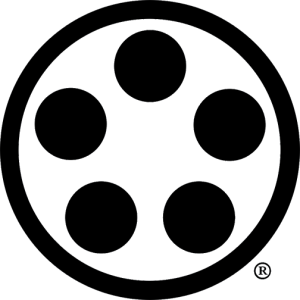Budo & Bujutsu
Originally published in The Bujin, Vol. 3, No. 5, 1980.
There exists, among many of today’s students, a certain amount of confusion as to the difference between a Ko-Budo and a Ko-Bujutsu. Of particular interest to the martial artist is the difference in attitude required from the students of these respective arts.
By definition, a Ko-Budo is a traditional, old method of spiritual development while a Ko-Bujutsu is an old method of combat. The technical difference between the two can be, for the purposes of this article, regarded as unimportant. What is important is the difference in attitude of the student.
Originally, any Bujutsu had only one purpose…survival on the battlefield. All else was secondary. Either the techniques of the ryu worked or they didn’t. If they did not work the ryu ceased to exist. As far as the students' attitude went, so did his instruction. The student who maintained a properly respectful attitude in the dojo was rewarded with a new technique. The Sensei would refuse advance instruction to the disrespectful student for the simple reason of self-defense. He did not want to take the chance of making the student good enough to be dangerous to the Sensei. Hidden (secret techniques) were only given to those students that the instructor could trust.
The situation in a dojo teaching a form of Budo was quite different. Here, the stress was on personal development more than on survival. The techniques were, in most cases, never intended for battlefield use (even though they may have originated there). The attitude of the student, while as respectful as that of his Bujutsu counterpart, was still different. While the student of Bujutsu showed respect out of fear (of his Sensei) or hope (of learning a new technique) the Budo student was motivated more by a sense of gratitude. Becoming aware of how the study of Budo had affected his personality, his respect was for what the instructor had done, not for what he might do in the future.
When we get to modern times the situation has, in some cases, changed considerably. There is now no practical use for the Bujutsu. Of what use is a technical skill with a sword? The people who study a Ko-Bujutsu now do so for an entirely different reason than their ancestors. Ko-Bujutsu are now studied to preserve a historical aspect of culture, much in the same way as certain Americans appear in annual pageants in which they wear old costumes and shoot muzzle-loading rifles. A Westerner can no more truly appreciate a Bujutsu than an oriental can feel deeply about the Fourth of July. They are both deeply rooted within a particular culture. You must first know the culture.
In most cases, Ko-Bujutsu is preserved by a certain family as a ‘family art’.
The student feels loyalty to the art and the family. He is not concerned with whether or not the technique actually works nearly as much as he is about the technique being done in the same way now as it was originally. He approaches his study from a historical perspective, not a personal one. He will be very concerned with maintaining all Kata in their original form. Changes of any sort are not allowed, even if they would tend to improve the combat effectiveness of the art. The student will also be very concerned with lineage and frequently able to trace the history of his ryu back, master-by-master, over a period of several centuries. His respect and loyalty are generated from the historical aspect of the art more than a personal one
The student of a Ko-Budo, on the other hand, has not changed so much. Remember, even in olden times he did not really care if the techniques were usable, or even if they were new. The Budoka takes a very selfish attitude toward his art. He is studying to improve himself. If a certain technique can be made to generate a more intense spiritual feeling by being changed, he will go ahead and change it without a second thought. He feels no great loyalty to previous generations of instructors, only his own. The previous instructors didn’t do much for himself personally. The only respect that a previous generation would receive is that due his rank, plus some gratitude for creating the Budoka’s present Sensei.
Technically, there are as many schools of Ko-Budo as there are senior students. The Ko-Budo student, after he has mastered the basics must continue his own way, for his is an individual goal. He does not really worry about the next generation as much as he does himself. He freely modifies both technique and remaining methods to improve his personal advancement.
Any respect toward his instructor must be continually earned by the instructor. There is no great loyalty toward the original ryu! As long as the Sensei continues to cause improvements to occur in the student, he will be respected. As long as the ryu continues to be a suitable vehicle for the students progress, it will receive undivided loyalty.
However, comes the day when an instructor can no longer instantly answer the question, or the ryu provide the spiritual pressure needed, they will both be abandoned. With a certain sadness to be sure, and remembered with fondness…but no matter how many tears the student may shed, he will move on. He must! For the study of Budo is a personal thing.
The Bujutsu student can enjoy the comfort of family tradition, and above all the stability of a timeless art. For the Budoka there are no such luxuries. He is in a process of dynamic change. He is destroying his old ‘self’ in order to create a new one. He is striving to understand that which can never be understood…to reach the essence of reality.
Any Budo that demands permanent, unquestioning loyalty, or any Bujutsu that does not have it, cannot long survive.
This is something that must be understood by the new student.
A Bujutsu is a family sort of thing. A Budo is a personal search for fulfillment. There is no place for ‘politics’ in either. An ‘organized Budo’ is a contradiction in terms. A Bujutsu dojo that does not generate perfect loyalty is doing something wrong.
This does not mean that the shiny new Shodan should feel free to go out and do ‘his own thing’. It takes a minimum of five years for most people to start to gain a slight understanding of what they are doing. For mastery of the fundamentals, allow at least ten years.
A class in Budo being taught by a Shodan is like a sex education class taught by a virgin. They may have read the books, but they don’t know.
A student should not join a dojo that teaches Budo unless he is ready to spend at least ten years there. He should not join a Bujutsu dojo unless he is ready to devote the rest of his life to it! The Bujutsu dojo demands permanent unwavering loyalty to the style… Budo requires the same loyalty to the self.
Bujutsu is a rock…solid and unchanging. Budo, however, is constantly in a state of flux. But only on the outside. Spiritual principles are the same now as they were a thousand years ago. It is only the methods of teaching that have changed. I am a much better instructor than my Sensei was and (hopefully) my students will become much better than I am. This is the way of Budo.
Ko-Bujutsu/Ko-Budo are not for everyone, for it is impossible to be a part-time student of either. You must be a complete believer or nothing!
The End


